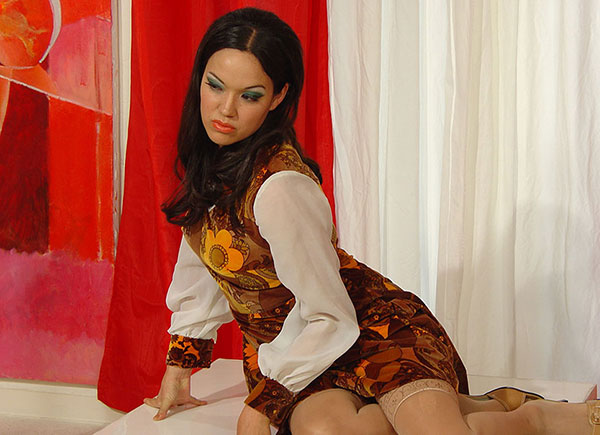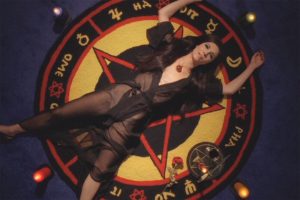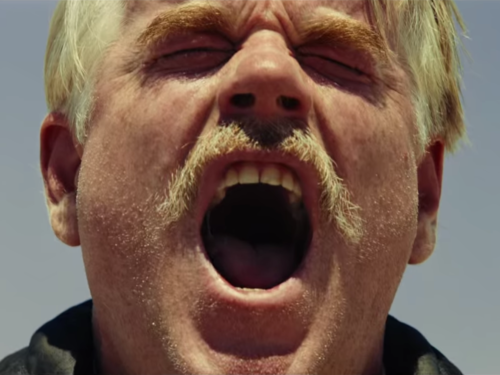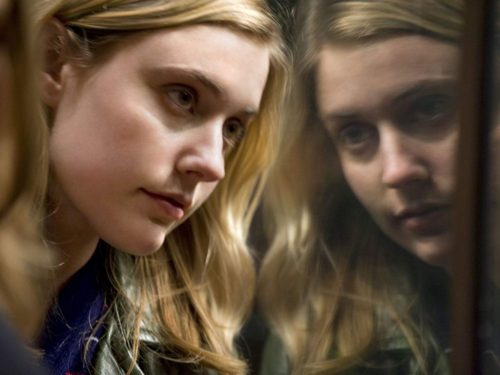Biller’s ambitious debut feature arrives on Blu-ray this week, demonstrating the Love Witch filmmaker’s talents for exploring sexuality and gender through stylized retro worlds
Anna Biller’s debut feature, Viva (2007), is a rather strange film; one that feels more interested in an intellectual analysis of its characters than in asking audiences to identify with or emotionally understand them. Rather than being a failing of the film, this stands out as the marker of a self-assured directorial talent. In fact, Biller didn’t just direct and write the film; she stars in it, is responsible for the film’s music, editing, costuming, production design, and even a sequence of animation. Inspired by old Playboy magazines and sexploitation films of the 1970s, Biller’s extensive involvement on the project is impressive not only for the period perfection of the film’s aesthetics, but for how she uses them to explore her characters’ identities and desires.
The film revolves around Barbi (Biller), a young woman who, unfulfilled by her life as a 1970s California housewife, embarks on a journey of self-discovery and exploration of bohemia during the sexual revolution, during which time she takes on new identities and changes her life entirely. On its surface, Barbi’s search for meaning and fulfillment as a woman who wants more than to be a doting housewife is a recognizable and mythic narrative structure. Biller’s approach to the material is highly self-conscious and analytical, with each character portrayed as a caricature of some sort. Viva has its moments of didacticism, but they are balanced out by the film’s ambiguities and confusions around questions of what it means even to have an identity and a sense of connection with other people.
Barbi and her husband, Rick (Chad England), live a comfortable life in a California suburb. Their neighbors Sheila (Bridget Brno) and Mark (Jared Sanford) lead virtually identical lives to them, including, as we eventually learn, Sheila’s frustration with her own role as a homemaker. One day, Barbi is sexually harassed by her boss at work, and she quits her job. Rick encourages her to give up her work and become a housewife, and he’ll continue as the breadwinner of the house. Not long after, Rick goes on a long business trip, leaving Barbi home for a month with nothing to do but reconsider her marriage and flirt with the other options available to her.
She and Sheila take up with a madam who arranges liaisons for them. Barbi adopts the name “Viva,” which she chooses for its Italian origins celebrating life as well as it being the name of her favorite women’s magazine. In her new identity, Viva encounters a few men, including a photographer, Clyde (Marcus DeAnda), and the leader of a nudist colony, both of whom she refuses to sleep with at first. While she pursues these lackluster endeavors, Viva also attempts a career at modeling, without finding much success. In the meantime, a forlorn Rick longs for his reunion with Barbi. Mark’s and Sheila’s marriage does not fare that much better, as Sheila is tempted by a wealthy older client capable of providing her with a life of material comforts and pleasures.
Eventually, Viva makes her way to an orgy orchestrated by Clyde. Mark is in attendance along with other members of the bohemian world that Viva has encountered. Amid the orgy, Viva slowly enters a trance-like state where she becomes, effectively, a sex goddess. She draws everyone into her eroticized presence as she sings and dances, seemingly only half-aware of the people around her and what their intentions may be.
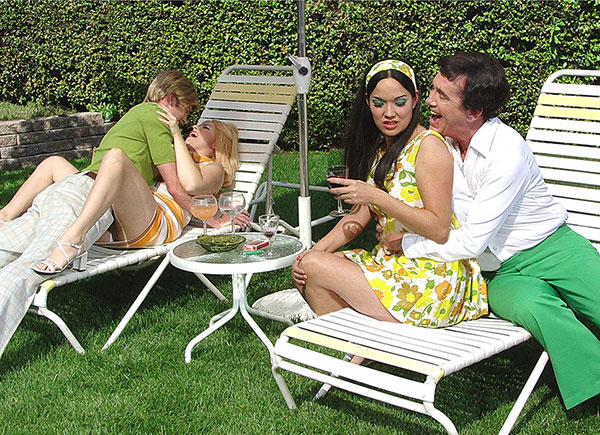
Barbi/Viva is the most subdued performance in the film, but the other characters are played to campy extremes. In particular, the men are all broadly drawn as variously insensitive foils to Barbi/Viva’s emotional needs and desires, or are simply predators looking for their moment to exploit her. In particular, Jared Sanford portrays Mark with an unnerving sense of self-awareness, as if each line out of his mouth is directed to the audience and meant to be analyzed as innuendo. Early in the film when Mark flirts with Barbi in front of his wife, Sanford plays into the audience’s sense of disgust and bafflement with his tongue-in-cheek lechery. He is such a perpetually grotesque figure that his inappropriate behavior barely registers with his wife. Biller makes the pathology of sexism palpable through her treatment of Mark and other male characters, including Clyde, who is also incapable of containing his attraction to Barbi/Viva, which eventually boils over into violence.
Ostensibly, Viva is informed by second-wave feminism’s attentiveness to women searching for fulfilment in their professional and sexual lives after decades of being denied these pursuits. But what makes Biller’s work so interesting in this film is that she asks her audience to keep their distance from the ideological stance held by some of her characters. There is such an artificial and alienating quality to the performances in Viva that the film feels Brechtian. In this case, the spectacle that is being broken down for audiences is, precisely, the narrative and discourse of female empowerment in this very specific form. In other words, Biller presents Barbi/Viva’s yearning — and her struggle with the men in her life — in an abstracted and almost academic fashion. To my mind, this speaks to Biller’s critique of this particular kind of feminism, which is so highly individualized and navel-gazing that it becomes counterproductive and alienating.
This presentation is manifest even more sharply when, at one point, Mark breaks the fourth wall and addresses the audience directly to tell them that there will never be a better time to be a man than the sexual revolution. This moment plays into a self-awareness that Viva has not just about itself as a film, but also about the sexual revolution and how men relate to the idea of the “liberated woman.” Mark’s comment makes it obvious how Biller wants us to view the male characters in the film. They are essentially exploiting the premise of sexual freedom for their own gain, rather than being concerned with the satisfaction of their female partners. But it’s also hard not to view Mark’s sentiment as an ironic one, because it is not as if contemporary gender and sexual dynamics have changed all that much in America. Even if today there is a greater acceptance of sexual expression than in 2007 when Viva was released, the realities for men are such that they can embrace the sexual empowerment of women without caring for them beyond moments of pleasure, or they use the very idea of sexual liberation and casual sex to exploit and abuse women, under sometimes flimsy or questionable pretexts for consent.
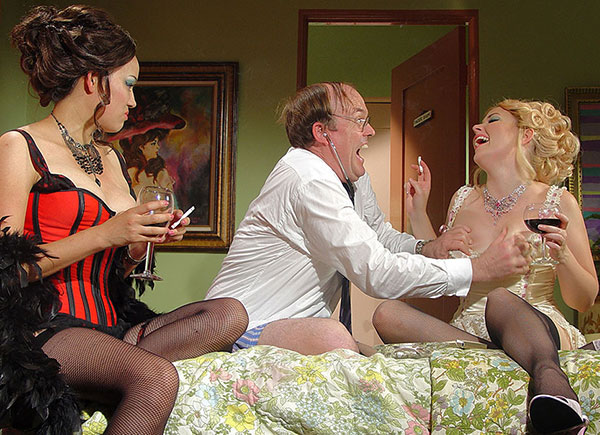
Yet through Barbi/Viva herself, the film is also able to take a critical look at a particular strain of feminism, predicated as it is on a notion of self-fulfilment that is ultimately rather hollow. Barbi’s eternal search for more — to be someone with a sex and professional life that is unrestricted either by the predations of men or by their emotional neglect, as we see with Rick earlier in the film — carries a certain pathos. Barbi’s desperation is expressed in a rather broad and cliched manner. It’s a daring choice on Biller’s part to make this woman into something of a caricature as well. In many ways, her performance as Barbi/Viva operates on the same level as Sanford’s portrait of Mark. When Barbi becomes her Viva persona, she is so narcissistically concerned with her satisfaction in all aspects of life that she quite literally loses control of who she is. As a goddes of sex and sensuality, Viva would supposedly be the polar opposite of the models that Barbi stares at in the magazines she adores — and for that matter, Viva would be the opposite of Barbi as well, as a being who radiates satisfaction and is not perturbed by any social barriers (i.e. the wants or indifference of men) in the way that Barbi is in her life as a housewife. However, Biller plays Viva, even at the height of her sexual powers during the orgy, in the same way that she portrays Barbi: Detached and monotonous to the point of being alienating to audiences. And to this end, Viva is less of a true alter-ego for Barbi, one that allows her to enact her most passionate and unrestricted desires, but rather a persona that Barbi seeks refuge in. On the surface, Viva seems capable of satisfying not only her desires, but those of anyone that she comes into contact with. But this goddess image is a mask that allows Barbi to retreat further into her own narcissism, and this moves her further away from connecting in a new or challenging way with the people around her. It is telling that Barbi eventually decides to return to her life with Rick, and virtually abandons Viva outside of attending an audition for a musical at film’s end with Sheila.
In a way, Viva feels like a lamentation for a particular vision of womanhood and sexuality. Barbi does not express much concern with the world outside of herself, which once again speaks to Biller’s brilliance in portraying her protagonist as rather hollow in how she interacts with other characters. And for that matter, it is important to reiterate that the other characters in Viva are similarly broad and unnatural, though, of course, Barbi is the character we are meant to sympathize with and follow. It is not just that Barbi seems to care very little for other people around her, but it is almost as if there is no world that actually exists outside of Barbi in the film. The men in Viva all pine for Barbi, which bears a certain irony for our heroine’s crisis: She is in a position to pursue any man (or woman) she desires and does flirt or commingle with several at various points. And yet, Barbi is never satisfied with her place in a world that she is virtually the center of. It is, effectively, as if Viva is made up of a world of dolls and playthings that are stimulating and absorbing but eventually lose whatever edifying value they might have had, and are revealed to be little more than a distraction.
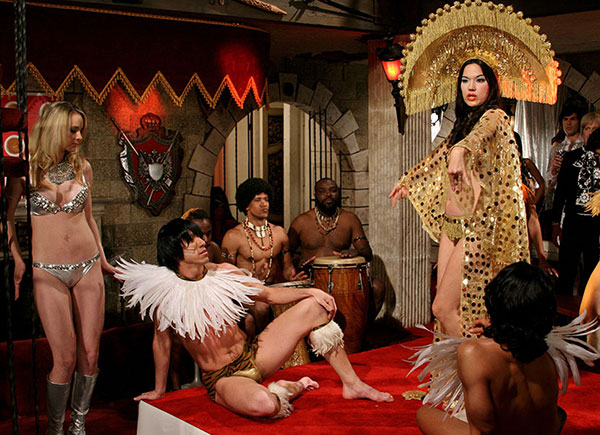
Biller draws our attention to the artifice of this world, its malleability and its sense of playfulness. Before Barbi becomes totally disenchanted with her domestic life, she visits with Sheila and Mark one Sunday morning when Rick is at work. Her neighbors are lounging by the pool, with Mark taking the opportunity to toy with a new camera while Sheila and Barbi flip through a Playboy. They discuss their own prospects as models, which results in an impromptu modeling session with Mark, who gleefully photographs the women stripping down to their bikinis. The film transforms into something out of Playboy, as if the pages have momentarily and whimsically come to life. At the same time, Biller sets up a visual tension with the pool in the midground of the shot, against which all of this action unfolds. That is, there is almost an expectation that the playfulness of the scene — with the ladies enjoying showing off for the camera, and Mark lustfully capturing every moment — will escalate into someone falling or jumping into the pool, as we might expect of a different sexploitation film. However, Biller creates an atmosphere so charged with artifice and cheap sexuality that it feels like it needs to be broken by some sudden, physical interruption. And yet, we remain in the moment, absorbing the full weight and strangeness of a scene designed to make us reflect on what we are watching, and how it affects us.
Ten years after Viva, Biller directed her second feature film, The Love Witch (2016). This sophomore work is a continuation of Biller’s interest in gender, sexuality, and ornate mise-en-scène. Biller again asks her cast to perform in a highly detached and unnatural way, so that many of the interactions between characters have the same abstract or analytical features seen in Viva. In The Love Witch, this abstraction bears a particular significance because the film is literally about magic and the phenomenon of enchantment. Elaine Parks (Samantha Robinson) is a witch who begins her life anew after her husband dies under suspicious circumstances, though as the film goes on it seems likely that Elaine murdered him. Throughout the film, Elaine engages with and kills multiple men that she seduces with spells and love potions.
Like Barbi, Elaine is searching for fulfilment, but specifically the kind that comes from love. But “love” is something of a curious term in The Love Witch because it is never entirely clear what Elaine means by it or even if she understands what she means. Sex is part of it, because Elaine does sleep with the men she finds, but it is also a complicated and confusing depiction of love. To a large degree, it seems that Elaine is looking for infatuation and the experience of surrendering oneself to another person. As such, witchcraft is a methodology for making infatuation like this possible. Yet, Elaine’s yearning is also a search for knowledge: She has an almost scientific desire to prove that this love is possible, with each man she finds being an experiment that adds to her understanding and fuels the intensity of her desire.
We can trace a motif in The Love Witch back to Viva: The act of looking, and what it means to interpret the signs and symbols that appear before you. In The Love Witch, we see this in how Elaine observes the men she entraps, how she studies their reactions to her affections as well as to the potions and spells that she conjures. In Viva, looking and interpretation are emphasized when Barbi studies the glossy images of women in her magazines, which Biller later echoes and reverses when Barbi becomes Viva, culminating with the orgy scene, wherein Barbi captivates the other characters and even beckons the camera to study her as she performs for the group.
It is worth reiterating the detached and often alienating presentation of both Viva and The Love Witch, expressed chiefly through the unnatural performances that guide viewers into becoming aware of their spectatorship. Biller is principally concerned not with the gaze, per se, as something that structures or reinforces how we view characters, gender, or sexuality, but with the phenomenon and experience of looking. For Biller, the look (of a character, of the character, of the audience) is not monodirectional — from her perspective as the director, or from that of just one character— but unidirectional. In Viva, where there is no one character whose eyes and perception control how we perceive Barbi or her alter ego, we shift from how Barbi sees herself, to how men and other women see her, to how we in the audience see her as a character being performed for us, or who is presented before us. Looking, in this sense, is full of vagaries and potentialities: What each character sees in her, what Barbi sees in herself, and what viewers see varies from one subject to the next. But even more, the simple act of looking — of exposing oneself to another, to seeing and learning and perhaps knowing something about them — gives Viva its structure and its thematic resonance.
Biller’s talent for abstracting and analyzing gender — capturing how alienating gender identities and performance can be, because this sense of self is directed towards and influenced by the perception of others — is beautifully displayed in Viva. For this reason, among others, Viva is a curiosity in the truest sense of the word, and Biller’s style exposes new ways of seeing with each subsequent viewing.
Purchase Viva on Blu-ray from Kino Lorber
Stay up to date with all things Split Tooth Media and follow Frankie on Twitter
(Split Tooth may earn a commission from purchases made through affiliate links on our site.)

